
- Date Converter
- Nepali Unicode
- Preeti to Unicode
- Unicode to Preeti
- Digital Marketing
- Entertainment

Mahabir Pun Biography- Early life, education, family, net-worth and contributions

Success is not only achieving something for ourselves but also doing something good for others. And this quote perfectly fits for legendary Mahabir Pun.
Here we have compiled everything about the legendary personality Mahabir Pun, including his early life, age, education also struggles and contributions.
Who is Mahabir Pun?
He is a multi-talented personality as he is a great scientist and researcher, teacher and social entrepreneur of Nepal. Also, he is the most renounced and liked person throughout the country due to his outstanding life-changing contribution to the rural communities.

He is a true “Mahan “or great human being as his name is “Mahabir”. Despite facing several difficulties, he introduced Wireless Internet technology in the rural areas of Nepal. Therefore, he is known as the first man in technology development as a researcher and initiator in Nepal.
Mahabir Pun- Early life and parents
Mahabir was born in a rural village Nangi of Myagdi district, as a son of father Krishna pun and mother Purbi Pun. His family’s conditions were not excellent. Therefore, he had to spend his early life helping his family and doing household works. So, he did not have happy childhood memory.
Education
Mahabir got a golden opportunity for his education after his father got retired from the Gurkha army. Fortunately, He got admission to Khairahani Higher Secondary School of Chitwan District.
But, he could not continue his further education due to financial problems. So, he started teaching in a school. After 12 years of his teaching profession, Mahabir started his higher education in Amrit Science Campus.
Moreover, during his college days, he worked to develop rural areas by applying things learned from his experiences. Finally, in 1996 he completed his Bachelor’s degree in science.
Besides, after the Bachelor’s degree, Mahabir moved to the USA for further study. He joined the University of Nebraska for a master’s degree in Educational Administration in 2001.
Age and Birthday
Mahabir Pun is in his mid-sixties. He was born on January 22 1955. But, he is still active in promoting rural communities lifestyles.
Also read this:
Kiran Gajmer Biography- winner of ‘the voice of Nepal’ season 3.
Anish Tamang early life, education, Age, sex, career, and wiki bio
Mahabir Pun -Contribution
His contribution is in multiple fields and has served the Nepali people in various fields and services.
Firstly, he served in the past as a professional teacher for twelve years. Also, he is the first Nepali who introduced wireless internet technology in rural areas of Nepal. Due to technological advancements, online education and internet facility become accessible to remote areas too.
Furthermore, Mahabir pun used to teach computer classes to fellow teachers and students. Also, Mahabir got good help from volunteers and donors. So, he finally could bring the wireless connection between the rural Nangi village and the other neighboring areas.
Moreover, Pun brought used computers on donations from abroad and distributed them to schools in villages.

National Innovation Center
In 2012, Mahabir put forward an aim of serving non-profitable services in innovation and development. So, he registered ‘Rashtriya Abishkar Kendra’/National Innovation Centre, a non-profitable organization/company, in 2012.
Furthermore, he is developing new ideas and also conveying research and development for the socio-economic development of Nepal.
Sanjay Silwal Gupta Biography.
Awards and Recognition
In 2002, Ashoka Foundation elected Mahabir Pun as an Ashoka Fellow organized by the Global Association of leading social entrepreneurs. Also, in 2004, he received the Award of Social Innovations from Global Ideas Bank.
Furthermore, in 2007, Pun earned an honorary degree award by the University of Nebraska as a Doctor of Humane Letters for his outstanding work for rural Nepal. Besides, in 2004 He was also elected into the Internet Hall of Fame.
He received an award for his innovative application of wireless technology in remote areas of Nepal. Not only that, but Mahabir worked to bring the progress of remote areas connecting the rural village globally.

Family and Relationship
Mahabir is married to Om Maya Pun. They tied a knot in June 1998. However, His wife refused to go to live with him in Chitwan in his parent’s home. The couple welcomed a daughter, June Pun, on September 20, 1998.
Social Media activities
At present, Mahabir Pun is not active on any social platform except for Twitter. But, he holds the official Twitter account, where he posts the recent development and innovation activities.
How to start an ecommerce business in Nepal? Is it profitable in Nepal?
5 best online pharmacies in Nepal.
Share this:
Read also related posts, privacy overview.

Why is baldness in men stigmatized?

Rabi Lamichhane Biography, Wife, Age, Career and Politics

Sushant Murarka Biography: An Incredible Entrepreneur from Nepal

Gopal Hamal Biography: The Rise of a Visionary Leader

Top Secrets and Thoughts of Nepalese Men Explained

Rajesh Hamal Biography, “Maha Nayak” of the Nepali Film Industry
Mahabir pun biography, early life, education and contribution.

You must all be familiar with Mahabir Pun’s identity and line of work. You’ve come to the right place if you still don’t know anything about him or know very little about him. The most well-known scientist, teacher, and social entrepreneur in Nepal is Mahabir Pun.
For his vast work employing wireless technologies to develop remote areas of the Himalayas, he is well known throughout the world. Learn more about the Nepali hero’s private life, marriage, family, net worth, and medical background.
About Mahabir Pun
Scientist, educator, social entrepreneur, and activist Mahabir Pun is a social activist of Nepal well-known for his considerable work in using wireless technologies to develop off-the-grid parts in the Himalayas. He is recognized as the first development man in the tech and research fields and is the one who brought wireless Internet technology to rural areas of Nepal.
In order to connect local communities in the Himalayas with one another, Mahabir Pun established the Nepal Wireless Networking Project in 2002.
In 2012, Mahabir Pun spearheaded the effort to register a nonprofit company called “Rashtriya Abiskar Kendra,” also known as the National Innovation Center in English. With his contribution of land for the National Innovation Center, Mahabir has gained popularity. Mahabir Pun is also a Ramon Magsaysay Award and Internet Hall of Fame recipient.
Born and raised in a small village called Nangi, a mountainous Myagdi district of western Nepal, Mahabir Pun is a well-known scientist, social entrepreneur and activist of Nepal. Mahabir Pun was born on January 22, 1955.

Father Krishna Pun and mother Purbi Pun were not able to provide Mahabir Pun a life he wanted. Therefore, he had to spend his early life helping his family in household works, grazing cattles and sheeps.
The time when his father retired Gurkha, his father took the extraordinary step of investing all the money to his son’s education. Mahabir Pun assisted in his siblings’ and sisters’ schooling for roughly 12 years as a teacher after completing high school while working in four different schools.
After applying to numerous institutions in the UK and the US, he was successful in receiving a partial scholarship to the University of Nebraska at Kearney in 1989. He received his bachelor’s degree in science education from this institution in 1992. 24 years after leaving his hometown as a young child, he returned there after graduating.
He first recognized the fundamental need for sustainable education in Nangi, where he also began to formulate his goal of building a high school that would serve as a model for local academic and economic development.

Pun gave the Himanchal High School a unique focus on computer training and several packages with the ability to generate cash. In 2001, he returned to the University of Nebraska to complete his master’s degree in educational administration .
In June 1998, Mahabir Pun married the love of his life Ommaya Pun. His wife did not accompany him to live with his parents in Chitwan. In Nangi, Ommaya Pun finished the ninth grade. Mahabir and Ommaya have a daughter named June Pun. June was born on September 20, 1998 in Pokhara.
As of 2020, Mahabir Pun’s net worth is predicted to be between $1 and $5 million. He derives much of his fortune from many social entrepreneurs, scientists, and teachers, among other things. But he uses most of his wealth in social services.
Contribution
Mahabir Pun returned to his home town of Nangi in the Nepalese Myagdi district in 2001 after receiving his master’s degree in training from the University of Nebraska at Kearney.
He had a dream to provide the children in the remote Himalayan with better educational opportunities. He modernized the village school, turning it into a focal point for neighborhood improvement initiatives as well as a place to receive instruction.
Later, Pun started numerous income-generating activities in his and nearby villages, including yak and rabbit farming, cheese and jam production, a camping operation, and many others, in order to raise money to run the university and provide job opportunities for the residents.

However, Pun had to walk from one hamlet to the next for several hours in order to talk with people because there were no telephones or other contemporary communication tools in that area. That was the time when Mahabir Pun established the Nepal Wireless Networking Project to build a local communication network for using wi-fi technology to connect people in the Himalayan communities.
His first goals were to bring the Internet to isolated schools, advance digital literacy, and raise the bar for instruction. However, because Wi-Fi was still a developing technology in the early 2000s, the goal of establishing a wireless community in the remote Himalayan region was challenging.
Additionally, because of the conflict there between Maoist insurgents and government forces, Nepalese authorities had prohibited the use and importing of WiFi gear. However, despite these difficulties, Mahabir Pun was able to connect 13 mountain communities to the Internet and a Wi-Fi network in 2006.
Since then, he has expanded the community and offerings to more than 175 remote villages in 15 Nepalese districts. These communities now use the Internet for e-learning, e-healthcare, local e-commerce, local dialogues, money transfers, and climate monitoring.
National Innovation Center
In 2012 AD, Mahabir Pun registered the organization “Rashtriya Abishkar Kendra” with the intention of offering non-profit services in the development of innovation. This facility is also known as the National Innovation Center.

Mahabir Pun claims that the primary motivation behind establishing this center was to promote research and development for the benefit of the nation’s economic growth. In this center, new innovations are being researched periodically.
Mahabir is currently running a crowd funding campaign to support the National Innovation Center. Pun and his team intend to build a 10 MW hydroelectric facility with the crowd funding money.
Awards and Recognition
Mahabir Pun has a long list of accomplishments and awards. His massive contribution to his field was the only reason that allowed him to receive so many awards and recognitions. Mahabir Pun was chosen as an Ashoka Fellow by the Ashoka Foundation in 2002, following an announcement/organization by the Global Association of Top Social Entrepreneurs.
He was also given the Social Innovations Award by the Hand of Global Ideas Bank in 2004. According to the Institute for Social Inventions, “the project is helping yak farmers stay in touch, families connect, and, with an expansion into distance learning, youngsters acquire the education,” using an ingenious combination of solar power, tree-based relay systems, and wireless technology.

Additionally, he also received the Magsaysay Award in 2017 for “his pioneering use of wireless computer technology in Nepal, bringing progress to a remote mountain area by connecting his village to the global community,” which is regarded by some as the Asian equivalent of the Nobel Prize.
Similarly, Mahabir Pun also received an honorary doctorate in humane letters from the University of Nebraska in 2007.
Apart from that Mahabir Pun was inducted into the Internet Hall of Fame in 2014. In the same year he was awarded Jonathan B. Postel Service Award by the Internet Society in.
Recently, a well-known source, Routine of Nepal Banda (RONB) , has reported that Mahabir Pun and the National Innovation Center will receive the “Bhavan Kriti Ratna ” honor and an NRS 1 Crore cash reward for their remarkable contributions to Nepal’s development.
Puns Social Media Accounts
You may also like

About the author
Add Comment
Cancel reply.
Save my name, email, and website in this browser for the next time I comment.
- Education 1
- Entertainment 7
- Health & Fitness 3
- Lifestyle 5
Trending World
Trending Net Nepal
Latest trending news

Mahabir Pun- Biography, Early Life, Contribution, Recognition
The winner of the Ramon Magsaysay Award and an Internet Hall recipient, Mahabir Pun. He is a Nepali scientist, teacher, social entrepreneur, a social activist and widely known for his extensive work in applying wireless technologies to develop remote areas of the Himalayas. He is the man to introduce Wireless Internet technology in remote areas of Nepal and is known as the first development man in the tech and research field.
“I get angry sometimes. When you are frustrated your moral goes down, but when you are angry your moral goes up.” Mahabir Pun
Table of Contents
Biography of Mahabir Pun

Early Life and Education
Mahabir Pun was born on 22 January, 1994 and raised in Nangi a remote village in the mountainous district Myagdi District of western Nepal. He spent his childhood grazing cattle and sheep and attending a village college besides paper, pencils, textbooks, or certified teachers. But Pun’s existence was modified dramatically when his father, a retired Gurkha, took the extraordinary step of shifting the household to the southern plains of Nepal and investing their whole financial savings in his son’s education. After ending excessive school, Pun labored as an instructor for about 12 years in 4 schools, whilst aiding his brothers’ and sisters’ education. In 1989, after several functions to UK and US universities, he succeeded in gaining a partial scholarship to the University of Nebraska at Kearney, from which he graduated in 1992 with a bachelor’s diploma in Science Education. After graduation, he moved back to his native village, twenty-four years after having left there as a child. It was once in Nangi that he acknowledged the quintessential want for sustainable education, and started to formulate his aim of growing an excessive college to serve as a mannequin for neighbourhood academic and financial development. Pun centred the Himanchal High School with a distinctive centre of attention on pc training and different packages with income-generating capacity. He then went back to the University of Nebraska for a master’s diploma in Educational Administration, which he did in 2001.

Contribution
After earning his master’s diploma in training at the University of Nebraska at Kearney in 2001, Pun returned to his native village of Nangi, in the Myagdi district of Nepal, with a dream: to grant higher instructional possibilities for the youngsters in the far off Himalayan foothills. He upgraded the village faculty and made it no longer solely a supply of education, however additionally the hub of neighbourhood improvement projects. In order to generate cash to run the faculty and create job possibilities for the villagers, he commenced countless income-generating tasks in his village and neighbouring villages such as yak- and rabbit-farming, cheese- and jam- making, a campgrounds operation and many others. But due to the fact, there had been no telephones or modern-day conversation structures of any form in that region, Pun had to stroll for a number of hours from one village to the next, to talk with people.
Pun established the Nepal Wireless Networking Project in 2002 to construct a nearby conversation community for the usage of wi-fi science to join human beings in the Himalayan communities. His purpose was once to carry the Internet to rural schools, promote digital literacy and enhance the first-class of education. However, the project of constructing a wi-fi community in the far-flung Himalayan vicinity the usage of Wi-Fi in early 2000 was once onerous because Wi-Fi was once a rising science lower back then. Also, the authorities of Nepal had banned the importation and use of wi-fi tools due to the fact of war between Maoist rebels and authorities forces there. The villages, which no longer had access to electricity, had by no means viewed computers. In spite of these challenges, Pun was once capable of joining thirteen mountain villages by using 2006 to a Wi-Fi community and the Internet. Since then, he has elevated the community and offerings to over a hundred seventy-five far-off villages in 15 districts of Nepal. Today, these villages use the Internet for e-learning, e-healthcare, neighbourhood e-commerce, neighbourhood discussions, cash transfers and climate monitoring.

National Innovation Center
Mahabir Pun led the initiative to register a nonprofit employer named “Rashtriya Abiskar Kendra ” in 2012, broadly termed as National Innovation Center in English. The foremost goal to set up the Innovation and invention centre in accordance with Mahabir Pun is to foster lookup and trends for the monetary improvement of the country. Mahabir labored with the authorities for funding of the task which did not now take place and due to the fact that in July 2016, Mahabir is jogging a crowdfunding marketing campaign to fund National Innovation efforts. National Innovation Center crowdfunding marketing campaign plans to construct a 10MW hydropower station, which in accordance with the initiative would sustainably fund it’s going for walks cost. Mahabir has acquired social enchantment with his donation of land for the National Innovation Center.

Worldwide Recognition
In 2002, Pun used to be elected Ashoka Fellow through the Ashoka Foundation, the international affiliation of main social entrepreneurs. The Foundation mentioned his contribution to overcoming the geographical isolation of many of the communities in which he works, with a new concept that should be replicated in different geographically remote areas with few academic or monetary opportunities. In 2004, he acquired the Overall Social Innovations Award from the Institute for Social Inventions. In 2007, Mahabir Pun was awarded the Magsaysay Award, viewed with the aid of some to be the Nobel Prize of Asia, The pun is one of 5 Nepalis to get hold of the Magsaysay Award, and the sole one to acquire the Magsaysay Award for Community Leadership. Later in 2007, the University of Nebraska awarded him an honorary diploma as Doctor of Humane Letters for his extremely good work for his country, Nepal. Mahabir Pun used to be inducted into the Internet Hall of Fame in 2014 and was once awarded the Jonathan B. Postel Service Award through the Internet Society. In 2021 Pun introduced a TV Show Aaviskar on Nepal’s first 4K TV channel Galaxy 4K.

Like the title ‘Mahabir,’ his contribution to the improvement of science and innovation for Nepal and Nepali is at the pinnacle ‘Mahan’. Mahabir Pun is famous in the course of Nepal with this unforgettable life-changing fulfillment in the direction of the rural areas of our nation.
Related Posts
Priyanka rani joshi’s biography: miss nepal world 2022, surakshya panta biography: the first nepali actress at cannes film festival red carpet, balen shah’s biography: the new mayor of kathmandu metropolitian, sanjay silwal gupta biography | age, girlfriend, career, miss nepal earth 2020- supriya shrestha biography, age, education, leave a reply cancel reply.
Your email address will not be published. Required fields are marked *

Connecting Nepal with Wireless Technology
Mahabir Pun

Mahabir Pun, a Nepalese teacher, social entrepreneur, and activist better off known for his substantial work in applying wireless technologies to develop the remote areas of the Himalayas, also known as the Nepal Wireless Networking Project. A renowned figure in Nepal, which initiation has been appreciated globally and recognized by the Ashoka Foundation, the Ramon Magsaysay Foundation, University of Nebraska, and Global Ideas Bank. A true inspiration for all.
Born on 22 January 1955 in Nangi, a remote village in a mountainous district, i.e., Myagdi District of western Nepal and having raised there, Pun spent his entire childhood grazing cattle and sheep and attending a village school with no stationery or qualified teachers. But his life took a good turn when his father, who was then a retired Gurkha, took the unprecedented step of migrating the family to the southern regions of Nepal. They invested their entire savings for his son’s education and future. After completing high school, Pun worked as a teacher for about 12 years in four schools, supporting his brother’s and sister’s education along with that. In 1989, after submitting numerous applications to UK and US universities, he succeeded in gaining a partial scholarship to the University of Nebraska at Kearney, where he graduated in 1992 with a bachelor’s degree in Science. After graduating, he returned to his native village after twenty-four years of living there as a child. He recognized the critical need for sustainable education in Nangi, then began to formulate his goal of creating a high school to serve as a model for local educational and economic development. He founded the Himanchal High School with a prime motive to develop computer education and other programs relating to income-generating capacity. But it was quite difficult for him as there were no telephones and modern communication systems of any kind in that region, so he was bounded to walk for several hours from one village to the next, to communicate with people. He thereafter returned to the University of Nebraska to pursue a master’s degree in Educational Administration, which he completed in 2001.
In the United States of America, Pun recognized the potentiality that information technology holds to transform the education system to extreme betterment and contribute to the economy of his village. He took complete courses to accentuate the skills needed to assemble, renovate and use the computers. Soon after returning, he successfully campaigned to donate the used computers from Japan, Malaysia, Australia, Singapore, and the US. He powered them with a return favor two small hydro generators, which Singaporean climbers donated on their way to Mount Everest installed in the nearby stream. Pun embarked on teaching computer classes to both students and fellow teachers, but the major priority was to establish a telephone and internet connection to the nearest city, Pokhara. He then e-mailed the BBC, asking for ideas. The BBC then publicized his dilemma, in which volunteers from Europe and the USA showed keen interest. In 2001, he got immense aid from donors and volunteers to rig a wireless connection between Nangi and the neighboring village of Ramche, using small handmade TV dish antennae mounted in trees.
Similarly, small grants received soon led to improvised mountain lop relay stations and a link to Pokhara. In 2002, Pun was elected Ashoka Fellow by the Ashoka Foundation, the global association of leading social entrepreneurs. The Foundation noted Pun’s contribution to overcoming the geographical isolation of many of the communities he works with, with a new idea that could replicate in other geographically isolated areas with few educational and economic opportunities. By 2003, Nangi had a wireless connection to the internet. They distributed more computers donated from abroad to other schools in other villages, and they began developing a wireless distance-learning project supported by income-generating ventures.
Additionally, Pun’s work on online educational services constitutes the first attempt in Nepal to address the scarcity of qualified teachers through technology. He then took drastic steps to ensure the success and growth of his projects to attend the computer training course in Pokhara, start economic projects to fund student’s expenses and teacher’s salaries, and attract hundreds of international volunteers with wide-ranging skills. He has built a new cultural center that developed communication links for the yak farmers and new ventures to international trekking and tour groups. In 2004, Pun received the Overall Social Innovations Award from the Global Ideas Bank, aka the Institute for Social Inventions. They further said, “Using an inspired mix of solar power, tree-based relay systems, and wireless technology, the project is helping yak farmers stay in touch, families communicate and, with an expansion into distance learning, children to gain the education.”
In 2007, he was awarded Magsaysay Award in recognition of “his innovative application of wireless computer technology in Nepal, bringing progress to remote mountain areas by connecting his village to the global village”.The Pun is the only Nepalese to receive the Magsaysay Award for community leadership. Later in 2007, the University of Nebraska awarded Pun an honorary degree as Doctor of Human Letters for his outstanding work for his country, Nepal. Mahabir Pun led the initiative to register a nonprofit named “National Innovation Center” in 2012 with a primary objective to foster research and developments for the economic development of the country. He has caught public attention by donating land for the National Innovation Center. Representatives inducted Mahabir Pun in the Internet Hall of Fame in 2014. The same year, he was awarded the Jonathan B. Postel Service Award by the Internet Society. Since July 2016, Mahabir is running a crowdfunding campaign to fund National Innovation efforts to build a 10MW hydropower station, which according to the initiative, would sustainably support the running cost.
He has, therefore, succeeded not just in creating an autonomous educational system but also a range of new economic and social enterprises to support remote communities.
- “Mahabir Taught 5 years in Himanchal Higher Secondary School” . Himanchal Education Foundation. 2016-09-06. Retrieved 2016-09-06.
- ^ “Villages Should be self dependent” . Story Cycle. 2014-07-28. Retrieved 2016-09-06.
- ^ “Mahabir donates his own land to make Innovation Center possible” . Kantipur Network. 2016-08-01. Retrieved 2016-09-06.
- ^ “Village in the clouds embraces computers” . BBC News. 2001-10-22. Retrieved 2010-11-01.
- “Internet dream becomes a reality” . BBC News. 2008-11-05. Retrieved 2010-11-01.
- ^ Jump up to: a b c d “Mahabir Pun – Ashoka.org” . Ashoka Foundation . 2002. Archived from the original on 2010-07-06. Retrieved 2010-11-01.
- “National Innovation Center, Innovating New Nepal” . My Republica. 2016-08-10. Retrieved 2016-09-06.
- ^ “NIC Nepal Concept Paper” . National Innovation Center. 2016-08-31. Retrieved 2016-09-06.
- “Internet Hall of Fame Inductee” . Internet Hall of Fame by Internet Society . 2016-01-16. Retrieved 2016-01-16.
Pragati Amatya
I love expressing myself through words and passionate about writing. I wish to try as many genres as I could to improve my versatility as a writer.
Yeti (Skull & Hand Skeleton)
A cup in honour of hira giri, you may also like, traditional healers push for recognition and licensing of..., farewell, subash chandra nembang: a fond farewell, gyani maiya sen, the last of kusunda, chepang and their chiuri, uday raj aaley’s quest to preserve the kusunda..., the epic saga of bicycles entering nepal, dr. sanduk ruit, bada kaji amar singh thapa, greta rana’s writing and history, ang tsherin sherpa & identity fluidity, leave a comment cancel reply.
Save my name, email, and website in this browser for the next time I comment.
The Foundation
The institute, 65th anniversary.
- Nangi's leaders were busy establishing a village high school. PUN eagerly joined in. This led, in 1997, to the donation of four used computers from Australia. Powering them with hydro-generators in a nearby stream, PUN began teaching computer classes at the Nangi high school. More computers followed, but it proved impossible to get a telephone connection to Pokhara and the Internet.
- In 2001, the BBC publicized his dilemma and within a year volunteers from Europe and the United States were helping him rig a wireless connection between Nangi and the neighboring village of Ramche, using TV dish antennas mounted in trees.
- Using PUN's "tele-teaching" network, good teachers in one school now instruct students in others. Local health workers use Wi-Fi to consult specialists in Pokhara.
- The RMAF board of trustees recognizes his innovative application of wireless computer technology in Nepal, bringing progress to remote mountain areas by connecting his village to the global village.
Nangi Village, where MAHABIR PUN was born, rests high in the Himalayan foothills of western Nepal. Here and in surrounding Myagdi District live the PUN Magar, whose men for generations have soldiered across the globe as Gurkhas. Yet, their worldly careers have done little to change their sleepy homeland, so far from the traffic patterns that knit together the rest of the world. Indeed, Nangi is seven hours' hard climb from the nearest road. No telephone lines have ever reached it. Despite this, these days the people of Nangi are definitely connected to the world outside. Wireless Internet technology has made this possible. MAHABIR PUN has made it happen.
PUN passed his boyhood grazing cattle and sheep in mountain pastures and attending a village school that had no paper or pencils or books. Wanting more for his son, PUN's father moved the family to Nepal?s lowlands, where, in Chitwan, PUN finished high school and became a teacher, working for twelve years to help his younger siblings through school. Finally, a timely scholarship led him to a bachelor?s degree at the University of Nebraska at Kearney. Then, in 1992, after more than twenty years away, PUN returned home to Nangi, determined to make things easier for other youths than they had been for him.
Nangi's leaders were busy establishing a village high school. PUN eagerly joined in. Once a month, he made the two-day trip to the nearest major town of Pokhara to check his email and maintain his links to friends abroad. This led, in 1997, to the donation of four used computers from Australia. Powering them with hydro-generators in a nearby stream, PUN began teaching computer classes at the Nangi High School. More computers followed, but it proved impossible to get a telephone connection to Pokhara and the Internet.
PUN emailed the British Broadcasting Corporation, asking for ideas. In 2001, the BBC publicized his dilemma and within a year volunteers from Europe and the United States were helping him rig a wireless connection between Nangi and the neighboring village of Ramche, using TV dish antennas mounted in trees. Some small grants soon led to the construction of improvised mountaintop relay stations and a link to Pokhara. By 2003, Nangi was online.
As word of PUN's project bounced around the World Wide Web, backpacking volunteers carried more and more donated computers, parts, and equipment into the hills. PUN expanded the wireless network to embrace twelve villages-distributing ninety used computers to local schools and communication centers, connecting them to the Internet, teaching teachers how to use them, and then troubleshooting until everything worked.
Today, connectivity is changing Myagdi. Using PUN's "tele-teaching" network, good teachers in one school now instruct students in others. Local health workers use Wi-Fi to consult specialists in Pokhara. Once-isolated students surf the Net and are learning globe-savvy skills. Villagers e-market local products such as buffaloes, honey, teas, and jams and use the Web to draw paying trekkers to campsites outfitted with solar-powered hot showers. In parallel projects, the people of Nangi have added a library, health clinic, and new high-school classrooms. Meanwhile in Kathmandu, PUN has successfully lobbied parliament to legitimize and democratize wireless technology in Nepal.
PUN, now fifty-two, is both self-effacing and charismatic. "I'm not in charge of anything," he says. Yet, he seems to be the driving force of much around him. Eventually, he says, the people of Myagdi District will have to carry on for themselves. In the meantime, he hopes to play his unique role indefinitely. "As long as I can walk," PUN says happily, "I can do this."
In electing MAHABIR PUN to receive the 2007 Ramon Magsaysay Award for Community Leadership, the board of trustees recognizes his innovative application of wireless computer technology in Nepal, bringing progress to remote mountain areas by connecting his village to the global village.
The Honorable Chief Justice, Chairman and Trustees of the Ramon Magsaysay Award Foundation, distinguished guests, fellow awardees, and brothers and sisters.
All of us grow up with lots of wishes. And we know for a fact that many of the wishes that we make can't be fulfilled. As a young boy my wishes were to have enough food to eat, and warm clothes and shoes to wear. I wished to have books to read, pens and papers to write on. As I grew older, I wished to go to college and to become an engineer so that I could get a better job and have a good life. However, many of my were wishes not fulfilled.
Memories of my old days' unfulfilled wishes have become my vision of creating better educational opportunities for rural children and creating job opportunities for disadvantage people so that they can have meaningful, peaceful and better lives. The wireless network that we created in some of the mountain villages for educational, medical, and local e-commerce purposes was just a small part of my vision to create better learning opportunities for the children, to provide medical assistance to villagers during emergency situations, and to bring communication tools for the villagers. We still have a long way to go to make the wireless technology truly useful for the people, and to replicate the wireless network all over the country.
I am not the only person to have this vision. This was the vision of the late President Ramon Magsaysay, who worked hard to improve the lives of fellow Filipinos and helped them live freely, happily and with justice. This is a common vision of all young people, parents, and community leaders around the world, who are working hard to help others live happily with justice and in liberty.
However, I never wished to get any kind of award. For the last fifteen years, I was working only to fulfill my vision within my capacity. Therefore this award was the greatest surprise of my life, and I am very thankful for it. This award has boosted my spirit very much and I feel much younger now even if I have crossed half a century of my life.
Let me share with you my lifelong vision, for I believe that visions will only be wishes if we don't share it and work on it. The first vision I have is to set up vocational training schools for rural people so that the young can get better jobs in the national and international job market. The second is to help people start income generating programs in rural areas that are viable there to create the local economy and to create jobs locally. My third vision is to establish a college by 2015 and a university later on for the children of poor people, who can't afford to go to college or university. My fourth vision is to bring information and communication technology to the remote villages of my country and use it for educational, medical, commercial and communication purposes. I am working on this vision with like-minded fellows in Nepal.
This international recognition will be helpful for us to reach the visions that I mentioned. In this way, we will be able to help a little to make the vision of late President Ramon Magsaysay come true. We will make it happen not by word but by deed.
Pun, Mahabir
A Nepalese community leader who connected the people of Nangi through wireless internet technology to the outside world
Most searched
Massage away your stress, dambar kumari and a fabric that transcended boundaries, gokarna forest resort the royal hunting ground, coffee cascara extra income for coffee farmers, some lesser-known vegetable dishes from the southern plains, networking nepal: the mahabir pun story.
In Electing Mahabir Pun To Receive The 2007 Ramon Magsaysay Award For Community Leadership, The Board Of Trustees Recognizes His Innovative Application Of Wireless Computer Technology In Nepal, Bringing Progress To Remote Mountain Areas By Connecting His Village To The Global Village. (Ramon Magsaysay Award Presentation Committee, 2007) Tomorrow 85 laptops will be coming in from Japan,” says Dr Mahabir Pun, the Ramon Magsaysay Awardee of 2007. “They have been donated by the International Telecommunication Union.” And where will they be going? “They are meant for the ‘One Laptop Per Child’ program and this batch will probably be sent to the Mustang region,” says Pun. He hands over his visiting card which announces ‘Donate One Dollar a Month for Wireless Broadband in Rural Nepal’ below his name. Below that are listed Dr Pun’s various affiliations to many foundations and projects. These include: Program Director, Himanchal Education Foundation; Ashoka Fellow, Ashoka Foundation; Board Member, National Trust for Nature Conservation, Nepal; Team Leader, Nepal Wireless Networking Project; Chairman, Institute for Himalayan Conservation, Nepal; Chairman, E-Networking Research and Development; Director, Community Relations, Open Learning Exchange, Nepal; and Vice Chairman, Nepal Research and Education Network. His craggy weather beaten face breaks into a smile as he says, “Yes, I am affiliated to many organizations. I only hope that they do the work they are supposed to do.” We are having our little chat in a tea shop near the Model Hospital in Exhibition Road, Kathmandu. It is after a pretty long wait that I have been able to catch hold of him. His laconic “I will be leaving for Pokhara tomorrow, so if you want to meet me you will have to come to the Model Hospital” over the phone has brought me here. After a few minutes with him I realize that this hospital is where I should have searched for him earlier since he has a somewhat close relation to it. He points out a six foot tall slim aluminum contraption on its roof. “I put that over there. It’s the link up to the Dolakha region,” he says. In fact, Dr Pun has linked Dolakha and the hospital via a telemedicine network. But Dolakha is not the only region to be so linked to the hospital. At the moment a team has gone to Gairkhutar village in Trishuli District and Pun is at the Model Hospital to test this new linkage. Other telemedicine linkages already in place are those between the hospital and Hetauda, Pharping, Chatiyan village, Jomsom, and of course, Nangi, Pun’s birthplace in Myagdi District central Nepal. Including the telemedicine linkages, says Pun, “there are 8,000 villages in Nepal with more than 15 million people living in rural areas. So far we have connected 35 villages in seven districts via the net.” I ask him, “About that ‘One Dollar a Day’ program? How has been the response?” “Well,” he says, “ we have received about 28,000 dollars till now. Not bad wouldn’t you say? This money is being used to link Jiri District.” Actually, funds seem to be the least of his concerns now. “Yes,” he agrees. “Money is not a problem. In fact, the Nepal Telecommunication Authority has about one and a quarter billion rupees lying idle in its Rural Telecommunication Development Fund. It is meant to be invested in building a network all over the country. I believe that if this money is spent well, it would be enough for the purpose without having to again as usual look for foreign aid.” He himself is a de facto advisor and tells me that he has recently given a written suggestion about how to utilize this fund. “I have said that most of it should be used to build a network among villages.” While on the subject, he also says, “Even the District Development Committees (DDCs) are willing to chip in. We have already received about 1.8 million rupees each from Makwanpur and Mustang DDCs. I am sure the Village Development Committees will also co-operate by contributing five percent of their income to ICT (Information and Communication Technologies) development.” Dr Pun is thankful to Model Hospital and to the Nepal Medical College for their involvement. “Dr Saroj Dhital, an old friend, is my compatriot and virtually the coordinator for these telemedicine projects. He is happy at the response and says that it is helpful both for diagnostic purposes as well as for continuous-education purposes of health workers in far flung villages. “Every morning from 8:15 to 9:15, doctors gather at the Model Hospital to network with the linked villages.” Mahabir Pun is also involved with the Open Learning Exchange Nepal project. “The Department of Education supplies the educational contents, which we then disseminate through our network.” He is the Vice-Chairman of Nepal Research and Education Network. He says that it is meant to develop the sharing of educational material among big colleges and universities worldwide and that about 15 Nepali colleges are already linked to the network. Currently he is also busy with networking Mustang District. “It will link seven schools and some hospitals right up to Muktinath.” Dr Pun is also collaborating with Thamel.com, a popular Internet business site, on a project on the Annapurna trekking route whereby trekkers can use their credit cards to pay for goods and services. In addition, with help from the Asian Institute of Technology in Bangkok, Dr Pun has built a weather station on a 3,600 m hill in Myagdi District. “This will help in researching global warming effects,” he says. “The other weather station we are working on is in Larke (in northern Gorkha District) at an altitude of 2,900 m. It should be completed by January 2010. It is supported by National Trust for Nature Conservation, Nepal, and should also assist airline pilots on the Pokhara-Jomsom route. In fact, we will be having video monitors on the tower which will give pilots a real-time view of weather and other conditions in the area.” “And yes, we also have a project in the pipeline whereby we will be collaborating with Nabil Bank to provide remittance service in the remote villages,” he adds. Actually, Dr Mahabir Pun has so many projects, both ongoing and planned, that I wouldn’t be surprised if he has forgotten to mention at least another half dozen! And he does look a bit tired. We ask him to stand in front of Model Hospital for a photograph. A few people look at him with some curiosity, probably wondering who he is. This is because he is so completely unassuming and dressed so carelessly. Perhaps that’s because he has so little time for such mundane things. He is going to Pokhara the next day, he says, and I feel happy for him that he has managed to take some time from his extremely busy schedule to spend some days with his wife and two daughters who live there. His parents live in Chitwan along with his sister. Mahabir Pun was born in Nangi, in Myagdi District; it’s a village for which he naturally holds a very special part in his heart. He has set up the Himanchal Educational Foundation to specifically support education and development projects in his birthplace. Naturally, he is a hero to his hometown folks as much as he is a hero to the nation, having earned well deserved recognition from international organizations. He was elected an Ashoka Fellow by the Ashoka Foundation, USA, in 2002, and the Overall Social Innovations Award for 2004 awarded by the Global Ideas Bank of the UK. The University of Nebraska, from where he did his higher studies, invited him for their winter commencement speech (a high honor indeed!) in December 2007, when he was also conferred with an honorary degree Doctor of Humane Letters. But his biggest moment was undoubtedly when he won the prestigious Ramon Magsaysay Award 2007 for Community Leadership from Asia’s esteemed Ramon Magsaysay Foundation. Keeping in mind the high tempo of his many activities, possible only because of his total commitment, one can rest assured that Mahabir Pun is well in line to receive many more awards both nationally and internationally. At the same time, knowing the nature of the man, one shouldn’t be surprised to know that the pleasure he gets when teleconferencing with villagers in his hometown of Nangi holds more value to him than do awards. Note: Dr Mahabir Pun speaks about his childhood days and the years following in a personal article on the Internet at www.himanchal.org/school-mahabir-pun.html
Nepal's Preserved and Fermented Wonders
Liquid gold: nepal's beer industry is growing and changing fast.
One need only glance at the beer section of the local liquor store to see that...
Nepal's Wild Ambitions
Photo: Pramod Neupane-WWF Nepal From red pandas swaying on branches in the eastern Himalayas...
Cultural Studies Group of Nepal: Insight from those who really know their stuff
If you are already wise to the ways of CSGN, feel free to skip to...
Kasthakala: The Art of Nepalese Woodcarving
From 1975 to 1979, Heinrich Meyer worked with the Bhaktapur Development Project, both as an architect and aiding...
The future for crafts in Nepal is bright
Watching the tourists in Mangal Bazaar, the Durbar square of Lalitpur District, nearly every day since the 1970s,...
ECS Columns
Living in nepal.
Switch to the dark mode that's kinder on your eyes at night time.
Switch to the light mode that's kinder on your eyes at day time.
An Idea That Changed Lives of Many- Mahabir Pun
It is already 2018, and I just heard about this great man, Mahabir Pun. A man who has changed the lives of many with his idea, an idea so profound that got him to ‘Internet Hall of Fame’. Not just that, he was awarded Ramon Magsaysay (also called the Asian Nobel Prize) back in 2007, Honorary Doctorate of Humane Letter from the University of Nebraska, along with many national and international awards and recognition.
After earning a master’s degree in education at the University of Nebraska at Kearney in 2001, Mahabir Pun returned to his native village Nangi in Nepal, with an ambitious and courageous goal. He had a goal, a dream, to provide better educational opportunities for the children and a better economy in the remote Himalayan foothills.
“My name is Mahabir Pun. Let me tell you about our projects. There was no internet in Nangi. The closest was in Pokhara, which is a two-day hike away. So every month I walked from Nangi to Pokhara to check my emails. For six years, every month, I did that. In 2001 I decided that there must be a smarter way. My dream was to bring a wireless network that would connect Nangi to rest of the world. People thought I was crazy. Nobody in Nepal believed that it could work. And there was also no equipment available in Nepal.
So I sent an email to BBC online news to ask them if they would know somebody who could help me building the wireless network in the remote areas. They replied: why do want to build this network? I said because we are very far away. They asked: what do you have so far? I said: we have built computers in wooden boxes.
They must have thought that is interesting and funny. We communicated for some time and then they published an article in 2001.
As a result of that I received many email from people who wanted to help us. Two guys wanted to come to my village and help me to build the wireless network. One of the guys was from Belgium, his name was Johann and another was from Finland, and his name was Johnny.
There were no antennas available in the market. Luckily we found big TV dish antennas that were available. The basic principle of these antennas is the same so we adapted the TV dish antennas to make them work for us.
In a morning in May 2001, we had everything set up. A TV dish antenna in Pokhara was sending a wireless signal roughly in our direction. And we were waiting in Mohare with a huge receiver. We stood at the peak of the ridge for almost two hours slightly moving the antenna in different direction searching for the signal from Pokhara. And then, in our surprise, it actually worked. Of course, it did not only mean that I could check my email now more conveniently. It was the start of something much bigger.
We have connected our medical clinic in Nangi with a hospital in Kathmandu. The doctors and health worker communicate with each other through a video conferencing system.
A local e-commerce platform id helping villagers to sell their goods and products more effectively.
We have established a high school in Nangi where 350 children are learning with latest online educational materials. Nepal is facing a big challenge today. There are not enough jobs available to make sufficient income for young people. That’s why many young people leave to work abroad. Very often under very poor conditions. The wireless project has created a base for new ways of income and opportunities for the young generation. One of my dream is to build a college and then develop that into a university. Especially in the mountain areas. To help people and the children of the poor people to go to college. Another project I’m working on with my friends is to build an innovation center. To nourish the creativity and innovative ideas of young people. Because there are many talented and creative young people being drained to foreign countries.
I would like to start more income-generating programs that are feasible in the mountains. I would like to promote tourism in more remote areas and build new trekking trails in the Annapurna region. “ – Mahabir Pun
Pun founded the Nepal Wireless Networking Project in 2002 to connect people in the Himalayan communities. The idea of building a wireless network back in 2000 was difficult as Wi-Fi was an emerging technology. Additional to that, people there hadn’t been exposed much to any kind of technologies. Despite the challenges, Pun was able to connect 13 mountain villages by 2006 to the Internet. Today, those villages are using the Internet for e-learning, e-healthcare, local e-commerce, community discussions, money transfers and weather monitoring.
Written by Dorjee Khando
What do you think.

Places to visit in Kirtipur

New Threat For Endangered Breed One Horn Rhino
Copyright © 2022 O.M.G. Media Pvt. Ltd.
Username or Email Address
Forgot password?
Enter your account data and we will send you a link to reset your password.
Your password reset link appears to be invalid or expired.
Privacy policy.
To use social login you have to agree with the storage and handling of your data by this website. %privacy_policy%
Add to Collection
Public collection title
Private collection title
No Collections
Here you'll find all collections you've created before.
Open Transcripts
2014 internet hall of fame interviews: mahabir pun, presented by mahabir pun in internet hall of fame 2014 on 04/08/2014.
Mahabir Pun: I started building a wireless network in my country Nepal in early 2000 , when the wireless technology was just coming. Nobody then believed that it was possible to build a wireless network in the remote Himalayan region, and to bring Internet to the remote villages where there are no roads, no telecommunication services. So nobody believed it. I started building and connecting villages and brought Internet, and taught people how to use the computers and the Internet. Slowly we found that the Internet can be used for other things than just you know, sending emails or checking some web sites. So we are now using the Internet to provide health services, e‑learning services, and some local ecommerce services as well as some communication services for the people.
Intertitle: Describe one of the breakthrough moments of the Internet in which you have been a key participant?
Pun: Yes. I mean, for me the most memorable breakthrough that I think we made was in 2002 , when we built the first long-range wireless link using a simple wifi router and a home-built antenna. So we connected the first village that was thirty-four-plus and six kilometers—that was altogether forty kilometers away from the nearest city. And nobody then believed that it was possible to build a long-range wireless network with wifi. So that was the breakthrough, and that was a very memorable time for us when we made that happen.
Intertitle: Describe the state of the Internet today with a weather analogy and explain why.
Pun: I would describe it as…quite…good weather. It’s good weather because you know, the Internet is still in its infancy. And it is still growing, and we don’t know how far it will be able to go. But it is in quite good condition right now.
Intertitle: What are your greatest hopes and fears for the future of the Internet?
Pun: Mostly the concern I have that there are still over two or three billion people still who have not been able to use the Internet, or have not been able to get benefit out of the Internet. That’s my concern. Other than that you know, the technology’s improving very fast and at an amazing pace. So I hope that the Internet will be improved much more and will be much better, cheaper, faster, and will help even the people living in the remote or less-developed countries of the world. And that it will bring good benefit for the people.
Intertitle: What action should be taken to ensure the best possible future?
Pun: I’ve worked independently in Nepal for several years to bring the benefit of the Internet in remote areas where people had never heard about the Internet. I’ve tried my best and I have been working very hard for the last twelve years. So what I learned from my experience is that it’s not how hard just a few people or a few organizers work to bring the benefit of the Internet for the population of a country, it’s not enough. The government must take initiative to provide the benefit of the Internet to the whole population of the country. So what I’m trying now is to work with the government to find ways to bring the benefit of the Internet to the whole population, not just a few segments of a community or a few people who are living near the cities.
Common Tags

Mahabir Pun Biography

Mahabir Pun, a scientist, educator, social entrepreneur, and activist from Nepal, is renowned for his impactful work in utilizing wireless technologies to uplift off-the-grid regions in the Himalayas. He is recognized as a trailblazer in the fields of technology and research and is credited with bringing wireless Internet technology to rural areas of Nepal.
The Man Behind the Name
Mahabir Pun
Date of Birth & Death:
Born on March 10, 1971
Spouse’s Name:
Married to Sabita Pun
Children’s Name:
Two children – a son and a daughter
Living Address:
Resides in Nangi Village, Myagdi, Nepal
- Established wireless technology for internet connectivity in the Himalayan region
- Founded the National Innovation Center
Born on January 22, 1955, in the mountainous village of Nangi in the Myagdi district of western Nepal, Mahabir Pun faced challenges in his early life, assisting his family with household chores and tending to livestock. Despite financial constraints, his father invested in Mahabir’s education after retiring from the Gurkha regiment.
Early Challenges and Determination
Mahabir Pun’s journey commenced in Raghugram, where he faced early challenges due to poor health and limited resources. Despite the odds, his determination to pursue education prevailed.
Education Amidst Hardships Studying in a local school, Mahabir faced difficulties due to poor health and a lack of resources. With only a single copy, a pencil, and sheer determination, he continued his education, demonstrating resilience in the face of financial constraints.
Educational Pursuits
After completing high school, Mahabir worked as a teacher for 12 years, supporting his siblings’ education. In 1989, he secured a partial scholarship to the University of Nebraska at Kearney, earning a bachelor’s degree in science education in 1992. He later returned to Nepal, recognizing the need for sustainable education in Nangi, and founded the Himachal High School.
Overcoming Obstacles Mahabir’s story is one of overcoming obstacles. Despite financial constraints, he pursued higher education in the UK and the US, supported by scholarships that recognized his potential and dedication.
University Journey His educational journey culminated at the University of Nebraska, where he earned a Master’s degree in Educational Administration. This achievement marked the beginning of his impactful contributions to technology and education.

Technological and Educational Contributions
Passion for Technology Mahabir Pun’s passion for technology and education propelled him to contribute significantly to the development of his village and beyond. One of his remarkable achievements includes establishing wireless technology for internet connectivity in the Himalayan region.
National Innovation Center Driven by his commitment to innovation, Mahabir founded the National Innovation Center. This initiative reflects his dedication to fostering technological advancements and educational opportunities in Nepal.
Continued Efforts for Economic Development
Emphasizing Education and Innovation Even today, Mahabir Pun continues his efforts for economic development, emphasizing the pivotal role of education and innovation. His life story serves as an inspiration, illustrating the transformative power of perseverance and dedication.
Mahabir Pun’s return to Nangi in 2001 marked the beginning of his mission to enhance educational opportunities. He modernized the village school, introducing computer training and initiating income-generating activities like yak and rabbit farming, cheese and jam production, and camping operations to fund the university and create job opportunities.
Nepal Wireless Networking Project
In 2002, Mahabir Pun founded the Nepal Wireless Networking Project to address the communication challenges in remote Himalayan communities. Despite obstacles, including a government ban on WiFi gear due to conflicts, he successfully connected 13 mountain communities to the Internet and established a Wi-Fi network in 2006. The project expanded to over 175 villages, enabling e-learning, e-healthcare, local e-commerce, and more.
National Innovation Center
In 2012, Mahabir Pun registered the nonprofit “Rashtriya Abishkar Kendra,” also known as the National Innovation Center. The center aims to promote research and development for the nation’s economic growth. Mahabir is currently running a crowdfunding campaign to support the center’s initiatives, including the construction of a 10 MW hydroelectric facility.
Awards and Recognition
Mahabir Pun’s significant contributions have garnered numerous awards and recognitions. He became an Ashoka Fellow in 2002 and received the Social Innovations Award in 2004. The Magsaysay Award in 2017 and induction into the Internet Hall of Fame in 2014 further highlight his achievements. Mahabir Pun was also honored with an honorary doctorate from the University of Nebraska in 2007.

Marriage and Family
In June 1998, Mahabir married Ommaya Pun. They have a daughter named June Pun, born on September 20, 1998, in Pokhara. Despite personal and professional commitments, Mahabir remained dedicated to his vision of providing better educational opportunities in the remote Himalayan region.
In conclusion, Mahabir Pun’s life is a narrative of triumph over adversity, marked by perseverance, dedication, and a relentless commitment to making a positive impact on his community. His journey from the Himalayan region to global educational recognition showcases the transformative power of education and innovation. Mahabir Pun stands as a beacon of hope, proving that one person’s determination can bring about significant positive change.
Meanwhile, you can explore more about Mahabir Pun’s work and contributions on the National Innovation Center website.
In addition, his story teaches us that with determination and innovation, one can overcome any challenge. Therefore, Mahabir Pun’s life serves as a reminder that, in the face of adversity, dedication and a commitment to positive change can lead to remarkable achievements.
Where was Mahabir Pun born?
Mahabir Pun was born in the Bagad region of the Himalayas.
When was Mahabir Pun born?
Mahabir Pun was born on March 10, 1971.
What challenges did Mahabir Pun face in his early life?
In his early life, Mahabir Pun faced challenges related to poor health and limited resources, particularly during his education in Raghugram.
How did Mahabir Pun pursue education despite financial constraints?
Mahabir Pun continued his education with determination, using only a single copy and a pencil amidst financial constraints.
Where did Mahabir Pun pursue higher education?
Mahabir Pun pursued higher education in the UK and the US, completing his Master’s degree in Educational Administration at the University of Nebraska.
What significant contribution did Mahabir Pun make to rural development?
Mahabir Pun established wireless technology for internet connectivity in the Himalayan region, making a substantial contribution to rural development.
What is Mahabir Pun currently emphasizing for economic development?
Mahabir Pun continues to emphasize the importance of education and innovation for economic development, showcasing his ongoing commitment to positive change.

Download Nepali e Books Pdf online

Don’t Believe Everything You Think Book Summary & Review

Manisha Koirala Biography

Bidya Devi Bhandari Biography

Janakee Thapa Magar Biography

Roshani Rasaili Biography

All Your Worth Book Summary & Review

The Bogleheads’ Guide to Investing summary

I Will Teach You to Be Rich Book Summary

Ani Choying Drolma Biography
>>>Click here for more Nepali Books Review and summary<<<
Interview with Mahabir Pun
Q) What inspired you to work in social sector and build e-commerce/internet facilities for villages?
There is a saying, `necessity is the mother of invention”.Every thing we do is for meeting our necessities. Whatever work I did in the social sector, first I saw the need of the society that made me think about doing something. I don’t think it came from inspiration but from the needs of society and that is how I started my work and built internet facilites for villages.
Q) Which project are you working on currently?
Currently I am working for National Innovation Center. It is not a project but a campaign and it will go on and on. I have done small projects also like ORS Networking projects, community development projects, income generating projects, tourism projects to fulfill the needs of the community. I am fully spending my time to establish ways to run National Innovation Center.
Q) Has your vision of research center come to fruition?
It is coming, so far we are going on two prongs.One prong is we have established innovation center from where some young innovators are working on different ideas and different projects. Another prong is we are trying to find ways to make it sustainable through different kind of projects to generate money to support the innovation center. This is how the innovation center is functioning.
Q) How can the scientist in today’s time bring a change globally? What is the future of Nepalese scientist in coming years?
Science meansnot just pure science but scientist means somebody who creates ideas of something new. Any changes that are happening around the world are because of the science. Without science change is not possible. If without science if things were possible even animals could have done things that humans are doing. Science has brought inventions to fulfill the need of the people. After being able to satisfy the basic needs of human beings other needs like entertainment and to do all this science is an absolute necessity.Science is not only making atom boms or aeroplanes.Science is everything done to fulfill our needs. Without science no change is possible. At the present time there is no environment for scientist to do something.In the future if government has the same attitude as in today, Nepalese scientist have a very dim future. However, from the innovation center to encourage scientist and their innovative work we are willing to give them any kind of help to make their own future. Making their future bright means making nation’s future bright. That is what we are doing. In coming 10 years our goal is to support young scientist and innovators to make inventions and that is what we are trying for.
Q) How deep is knowledge of science and technology? What impact has it made to the lives of common people?
The knowledge of science is vast. Nobody knows how deep it is. Science and technology comes from mind and our mind has no limitations.It is impossible to know that. It has changed the way people are living, people are working. Earlier people were engaged in hunting so they made weapons. That was science and that made their life easier. Making tools for agriculture was also a science. Then they made cars, aeroplanes that made life easier. The thing is it has made life easier and life complicated also. To understand and implement science and technology we have to give time to make it work. So it is easier said than done.
Q) Howcan the government help social scientist realizes their ideas into a framework of nation building? What initiative of theirs can accelerate the potential of growth and productivity?
The main thing from government is they should give their support on every kind of research and development. That is what all the governments of developed countries are doing.It is the ideas that can lead to nation building and the role of the government is to manage those ideas brought by scientist, innovators and social entrpreneuers. Government should support and cash their ideas and that is what developed countries is doing.That is something not happening in Nepal. The irony is this role has not been realized by government of Nepal.
Q)You have stood as role model for youths by achieving” Best social innovation award in overall category” from United Kingdom. What is your message to Nepali entreprenuers and innovators about making an impact from their own discoveries?
We have innovators and entrpreneuers in Nepal, until and unless we commercialize the ideas of innovators and entreprenuers our country will not benefit. Government should create a platform where the beginning stage of innovators while they are coming up in that case government should totally support their efforts.Government is not doing that. My message is “Try your best”. Don’t quit because government has not helped and come to us to National innovation center.We will try our best to support your cause.
Q) How can the infrastructural work of our Country lead to progress in economic and social sector?
Infrastructure development is necessary for economic development of Nepal.The first priority of government is to build infrastructure. This is just 50% work for the economic development of the country.Another 50% is to manage and run for the economic development. Economic development doesn’t happen itself. Inorder to do so, we have to keep our talented and innovative people. Government should bring policy or programs to sustain talented people to develop technology, ideas and business and they areseen going overseas.
Q) One thing you wish you had done or not able to do as you planned?
During 26 years of my time, I fully worked as social entreprenuer and social worker. I tried so many things to help the communities. Now what I have thought is it is still not enough. The lesson I learned was by doing social work only a country cannot develop. There are thousands of people doing social work in Nepal. Their wish to make Nepal a better County. Social work cannot bring prosperity. I did social work and I helped people as many as I could. I am happy with that. For economic development we must pool talented and innovative people. I learned this life’s lesson and trying to implement it which has not happened but it is still possible.
Mahabir Pun is a Nepalese teacher, social entrepreneur and an activist known for his extensive work in applying wireless technologies to develop remote areas of the Himalayas, also known as the Nepal Wireless Networking Project. He is a widely known figure in Nepal, and his work has been recognized by the Ashoka Foundation, the Ramon Magsaysay Foundation, University of Nebraska, and Global Ideas Bank. He is the man of humanitarian who work for inspiring many youth to return their own country and serve it for its development. Mahabir pun is a person of phenomenal qualities; he is always ready to eradicate different problems inside the country.
« Previous Article
Interview with Govinda Giri
Interview with Mr. Govinda Giri
readmore...
» Next Article
Interview with Shailendra Raj Giri
Interview with Mr. Shailendra Raj Giri, MD of Real Solutions
BSc CSIT + -
- Bachelor of Public Administration second semester regular exam result of 2023 from Tribhuvan University
- Bachelor of Mountaineering studies second semester regular exam result of 2023 published by TU
- BTTM second semester exam result notice of 2023 published from Faculty of Management Tribhuvan University
- BBA Finance second semester regular exam result notice of October published by Tribhuvan University
- BIM 3rd Sem Exam Result 2023
- View all Results
- Memorandum of Understanding signed between Kathmandu University and Australian Catholic University
- Sumana Shrestha new education Minister wants to reform education in appointing University heads.
- BBA, BIM, BBM, BPA, BMS, BHM, BTTM and BBA-Finance Form Fillup Notice 3rd Sem 2024
- MBS and MPA 2nd Sem amended exam schedule 2024
- BMS Exam Form Fillup Notice 3rd Sem 2079 batch and 1st Sem 2080 batch
- View All Notices


Mahabir Pun
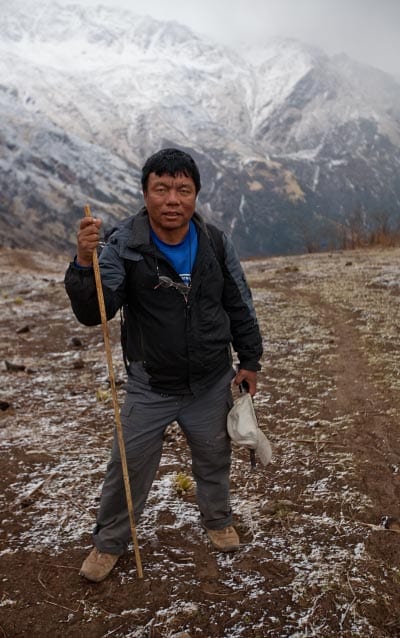
My Early School Days
It would be a long story if I write about my early school days. Therefore I would like to make it very brief. I went to the school in my village from grades one through seven. We didn’t have any paper, pencils to write with, or textbooks to read. Each of the students had a wooden board blackened with charcoal, and a soft marble stone from a nearby cliff to write with. Our teachers were the retired soldiers of the Second World War who had never been to schools themselves. I got pencils and paper to write with for the first time when I was in the seventh grade, and text books in the eighth grade.
As a school boy in my village I had never thought of going to high school. I had no ideas about high schools and colleges because nobody had told me about it. I remember two exciting events from my childhood. One event was when I heard about “walking in the air” and the other when I looked into a “talking and singing box”.
A soldier who was on leave had told a story in our class that some people from a country called America (I didn’t know where America was) flew in a “rocket” high above the earth, came out of the rocket and walked in the “air”. I didn’t know what a rocket was but the “walking in the air” part of the story made me excited. Another soldier had brought a box-like thing called a “radio” that talked and sang. One day when nobody was around, I sneaked into his room and looked into the talking and singing box to see the “people inside”.
My father: A Man with a Great Vision
I don’t know why my father was so serious about sending me to school at a time when people in my village and other villages around had almost no concern for the education of their children. My father was a retired soldier of the British Army, and could read and write only Romanized Nepali. I remember that he knew only simple arithmetic: adding, subtracting, multiplying and dividing (because he taught me).
I now consider him as the man with great vision. His vision had created so much trouble for me ( I thought so) in those early years of my life. Let me tell in one sentence what he did for me. He suffered himself and made the family suffer so much for sending me to school in the years that followed. My Journey to the Future Hasn’t Ended Yet
My childhood along with all the enjoyments of grazing sheep and cattle (with my grandfather), playing with friends and running up and down the slopes had ended when my father took me down to a middle school one day on foot. That was the beginning of my journey to the future that had taught me how to survive in the most unfavorable situations of life. The journey hasn’t ended yet.
We migrated from the village to the southern plain of Nepal for my schooling. By the time I finished my high school, my father had finished all his savings and sold all the things he had except for a small piece of land for the family. He had encouraged me to continue my school but I decided not to continue because I knew the economic condition of my family.
I started working as a teacher in a school. I taught about 12 years in four schools helping my brothers and sisters go to school. In 1989, I was able to come to the University of Nebraska at Kearney, U.S.A. to the surprise of the people in my village and my friends. You can say the opportunity was God’s plan, or a miracle, or a chance, or whatever.
It was at the University I thought about going back on a mission to help my mountain villagers of whom I had retained vague mental pictures. To tell in a sentence how I got the vision to go for this mission, I say that my dream a long time ago to go to a university was shattered due to financial restraints, and this created another dream to provide educational opportunities for the rural children so that they should not have to go through all the pain and struggle I went through. I have a first hand experience of how much it hurts to go through that kind of pain.
My Mission Back Home
After I graduated from the University of Nebraska in 1992, I went back to my village in the mountains. That was twenty-four years after we migrated from the village. Nobody recognized me in the village by face, nor did they know about my mission. I introduced myself to my relatives and villagers. It was before I arrived they had decided to start a high school in the village.
For a couple of months the villagers thought I was having a vacation because I didn’t say anything. I was trying to find ways I could help them. When I told them I would help them to teach in the school they couldn’t believe it. However, my activities that followed for helping finally made them believe I was serious. You can read the story as what we did in my village in the last three years under the Himanchal High School section of this home page. You can also read the long-term plans I made together with the villagers.
Two Simple Observations on Rural Development and Environment Conservation From 1993 to 1996, I have spent much of my time observing different organizations, both national and international, trying to help people to do rural development, and trying to educate people about nature conservation in the rural areas. I found that many research projects have been done, many papers have been published, many things have been tried, and huge amounts of money have been spent for rural development and nature conservation in Nepal. In some places significant progresses have been made. What I saw as my first simple observation, however, was that most of the remote areas of Nepal have been forgotten just because nobody ever thought about the place and the people living there. On the other hand the people living in the remote areas have no ideas how to seek for help, or whether any help is available.
My second simple observation is about approach for environment conservation. Many environmental organizations are approaching villagers through awareness programs by distributing printed materials, broadcasting from radio, conducting seminars, organizing short term training and taking villagers for educational tours.
My villagers also have seen a great deal of literature and have listened to many “development preachers” from cities working for city-based organizations. They have also attended several short term training on sustainable development. Accepting the literature thankfully, and listening to them patiently are our ways of respecting visitors, but applying what they asked to do is a different thing which is hard to apply in practical life. For example I haven’t yet found any ways to convince my villagers that tigers should be preserved. During the past three years the villagers killed two tigers. The only question they have is; “Why should preserve something that kills our cattle?” For them cattle are more important than tigers because cattle give dung which is used for making compost.
No matter what a person says, the problem of filling hungry stomachs comes before implementing the ethics taught in literature or seminars. I found that the short term awareness programs for sustainable development and nature conservation have had only superficial impacts on those people who are entirely dependent on natural resources for living. Our village can be taken as an example.
What I feel is that the teaching of environmental ethics would be so nice and would work best if accompanied with programs to help villagers make resources for bringing food for them to live. Emphasis to establish local economy must be given along with awareness programs.
My Approach and Role
I believe that no rural development programs and nature conservation activities will be able to reach its goal if we approach it from the urban areas, or the people from the cities try to do it for humanitarian reasons. The mountain environment and villages belong to the villagers who constitute over 80% of Nepal’s population. Therefore, the efforts for solving their problems should be tried by themselves from the very area. Most of the programs that have been started in the urban areas will not help much for the people living in the mountains.
The only thing outsiders can do is help them from behind the scene, encouraging the villagers to move forward and holding them from “falling”. Helps to move them forward and support to hold them from falling are what they need most. If these kinds of helping hands are available for a certain period of time, any rural areas will be able to help themselves.
My role in the future will be that of an outsider. I went to my village not to be a leader but to work as a volunteer. Even in the coming years I have no intention to lead them. This is how I want to approach nature conservation and rural development. I have decided to take this approach based on the conclusion I made from the two simple observations above it.
My Request to All Brothers and Sisters Around the World
It is my humble request to all brothers and sisters around the world for your comments and suggestions for the approach I am taking to help people in the mountain region of Nepal. I need your help to make the approach work. Your comments will keep my efforts and time going from astray.
Many people have spent so much money and taken so much risk to perform many stunts just to attract others’ attention. I feel that all the activities which I and villagers are trying to do in the remote village is far more than just a stunt in the history of community development, and we are actors on an important stage, far more than just stunt men. You can also take a part in our development by supporting this project or getting involved in several ways. It will be worthwhile. I would like to invite you to take an active part or perhaps be an observer.
Here is how you can be an actor in our development and help this project.
Request for Help
You can provide your assistance for the school and rural development programs in two ways;
1. You can help to start income generating programs:
- Sponsoring men and women from our village to take training on sewing, carpet making, knitting, handicrafts, embroidery, carpentry. It cost about US$60 a month to sponsor a person for taking training on these trades in Nepal.
- Buying sewing machines, looms, small machines and tools needed for the programs as mentioned above.
- Helping to establish jam making, paper making, poultry farming and a green house for tomato growing on smaller scale.
- Helping to start tourism business such as trekking agency, travel and tour company to bring tourists in our area.
2. You can help the high school project:
- Contributing small amount of money as one time or monthly basis donation. The money will be spent to pay for the teacher. Right now we are short of about US $500 a month for paying the teachers.
- Providing teaching materials, game materials, learning materials and musical instruments.
- Providing money to buy text books for students which would be about US $10 per student for a year. You can also provide books for the library.
- Sponsoring poor students to go to school. A student needs US $8 to pay for tuition and to buy stationery for one month.
- Sending stationery suplies like paper, pencils, pens and calculators.
- Providing audio-visual equipment like slide projectors, used computers, over-head projectors and laboratory equipment.
- Providing your voluntary service as a school teacher, health worker, or vocational trainer for short time.
You can make an online tax deductible contribution using our contribute section. You will get a receipt from the Foundation. The foundation will directly transfer your contribution to the school’s bank account in Myagdi, Nepal.
More on Mahabir:
- Mahabir Pun was elected Ashoka Fellow in 2002 by Ashoka Foundation, USA, which is the global association of the world’s leading social entrepreneurs. The foundation recognizes people from around the globe, who have “innovative solutions to social problems and the potential to change patterns across society”.
- Mahabir Pun, was given Overall Social Innovations Award for 2004 by the Global Ideas Bank (aka the Institute for Social Inventions) based in UK.
- The Ramon Magsaysay Foundation of the Philipinnes awarded our Team Leader, Mahabir Pun Ramon Magsaysay Award 2007 for Community Leadership . Mahabir Pun and the Nepal Wireless Team thanks everyone who has helped us get this recognition.
- University of Nebraska, USA invited Mahabir Pun for winter commencement speech and awarded Honorary Degree, Doctor of Humane Letters in December 2007 for his outstanding work for his country, Nepal.
- Be a Teacher
- Conversation Clubs
- Memberships
- Groups & Clubs
- New to the Upstate?
- Directory of Resources
- Celebrate Cultures
- Ambassador Program
- Translation & Interpretation
- Event Calendar
- Global Upstate Conference
- Salsa at Sunset
- Upstate International Month
- World Affairs Council
- Become a Member
- Become a Sponsor
One Man: A Path to Innovation with Mahabir Pun
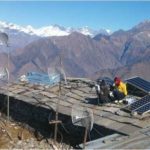
Several weeks ago the Upstate had a visit from an unassuming man, tirelessly journeying across 45 cities in 50 days, to build partnerships for a vision of opportunity in Nepal. Mahabir Pun has spent the past 26 years, since graduating from the University of Nebraska, on building community projects around the idea that innovation is the way to a brighter future for his country. As Mahabir has no paying job to speak of, in fact, has never had since his return to his country, every project must have support and sustainability built into its fabric. But how do you build a future with no finances at hand? How do you build entrepreneurship from the hard, rocky ground up? How do you build new life into a country where talent retention does not exist and the bright students must seek jobs far from home?
As one of the world’s least economically developed countries, Nepal faces a huge trade deficit with over 90% of its needed goods and manufactured items being imported from other places. Young, innovative and creative talents are being lost at an alarming rate.
Enter Mahabir Pun and his realization that Nepal’s best chance for economic development, given its natural resources, political climate, and economic realities, lay in sustainable entrepreneurial projects and science based research, technology creation, and innovation.
When Mahabir first returned to his country after being in the U.S. for university, he quickly realized there were no jobs to fit his skills. He asked the community what they needed help with and the response was immediate—“We need a high school.” So, as Mahabir relates, “I built a school.” Then he eventually built a second one, pulling along the village families into economic development projects to make the schools sustainable. From cheese making to decorative paper products for sale to tourists, every undertaking was made with a goal of raising the standard of living among his people and providing an opportunity for education to future students.
The Himanchal High School was founded by Pun to have a focus on computer education and other programs thought to be best for future income generation. Computers are expensive and Mahabir would have to find an innovative way to meet the need. What does Nepal have in plenty? Tourists from many different countries. An idea was born to connect the school with used computer parts so that computers could be built affordably. Mahabir campaigned in the USA, Japan, Malaysia, Australia, and Singapore for donations. The computers were powered by 2 small hydro generators—sustainably powered by the running water of a nearby creek.
From there it was only a small amount of time before connecting villages to each other and much needed communication support became the next goal. For 2 years Mahabir and his supporters worked to develop a system to address the complicated prospect of getting wireless signals across the vast, mountainous land that separates villages from each other. Through the building of handmade TV dish antennae and improvised relay stations, Mahabir’s hometown of Nangi now had a way to connect to the nearest city of Pokhara, and to the internet. This work would allow access to distance learning and to an influx of new communication opportunities.
So by now you are thinking- Wow! What initiative! But all of that accomplishment is not the best part.
According to Mahabir, the best part is always the next part, and for him it’s a quest to bring his goal for a National Innovation Center (NIC) to life. Registered as a non-profit in 2012, the NIC’s vision is to create a culture of research and development in Nepal and to help nurture and promote innovation-based ecosystems by employing both bottom-up and top-down approaches. The vision also includes a program to match talented researchers and scientists who work abroad, mentors in fact, with young Nepalese participants. (A list of current mentor needs is at the end of this article.)
Sitting on donated land, the structure has taken shape as it looks out over the mountains; all glass and light so as to inspire creativity. Mr. Pun is leading a crowd funding campaign to support building a 10MW hydropower station which will power the NIC facility. The registered hydropower company would be a major stakeholder and generate cash income by selling power to the government. For now, 42 researchers and innovators work across different parts of Nepal. The center support allows them to work on projects ranging from drones delivering medicine, to solar powered cooling suits, to ATV’s that can traverse the exceptionally rough terrain.
Mr. Pun believes that the structure applied by the innovation center is replicable in all underdeveloped countries. Young talents in Nepal will receive full financial support and mentorship from the National Innovation Center in four steps. This model aims to retain, nurture and promote Nepal’s top human capital and leverage their considerable intellect, creativity, and talent in fostering the country’s social and economic growth. And that might be the best part.
For more information on the National Innovation Center of Nepal and Mahabir Pun visit https://nicnepal.org/
Expertise Mahabir is seeking right now for mentoring his Nepalese innovators:
- Experienced professionals who can mentor and lead the team of young engineers to design and develop special electric vehicles. 2. People with a mechanical engineering background, 3D CAD, experience with sheet-metal enclosure design for equipment being developed at NIC. 3. People who have deep experience with electronic systems design, including complex digital circuit design, PCB layout, and test for re-designing and developing e-learning hardware using the latest technology.
- People interested in helping to develop an electronic system powered by solar energy that can chase monkeys and other wild animals away from farms to help protect crops.
More To Explore

Share This Post

Thanks for your interest in joining our mailing list.
Please complete the information below and click Sign Up.
All fields are required.

- Entertainment
- Beauty Pageants
Explained: Who Exactly Is Mahabir Pun & What Does He Want?

You must have been hearing and reading a lot about Mahabir Pun lately; but do you know who exactly he is, what has he done so far, what does he want to do now and why does he always seem to be so dissatisfied with the government? Well, let’s find out.
Who is Mahabir Pun and what has he done so far?

Born in Nangi Village in Myagdi, the son of a British Gurkha spent his childhood attending a village school which lacked all the basic infrastructures required for students; and grazing cattle and sheep that he never actually enjoyed. He always wanted to pursue better education which was an impossible thing in his remote village. It was after his father retired from the British Army and moved to Chitwan when his dream of studying in a better school came true. After finishing high school, he started teaching in schools and continued in the profession for a decade until he got admission to study Bachelor’s level at the University of Nebraska in United States.
After staying away for quite some years, Pun returned home in 1992. He arrived in his village with a zeal to do something innovative. His first step towards his dream of making his village as developed and modern as the cities was establishing a school where he began teaching as well. To make his students be able to compete with the world, he initiated computer education in the school for which he had hard working days and sleepless nights for months. He had to communicate with his friends and some organizations abroad to have them donate some computers required at the school. In order to communicate with them, he had to take a journey of two days to Pokhara to send them an email. But all his hardships and efforts bore fruits and he did receive some computers for the school. The next challenge was lack of electricity for which he had to set up two small hydro generators, donated by Singaporean climbers on their way to Mt. Everest, in a nearby steam. And hence, the school children were able to study computers, which was a dream turn into reality in such a remote village. But that was not it for Pun who had something else too in his mind. He now wanted to connect the village with telephone and the internet as well.
Pun had a journey full of hurdles in front of him but he was determined to take it. He communicated with BBC and asked for ideas and their assistance. Once BBC ran his story, volunteers and donors from various parts of United States and Europe responded and helped him to rig a wireless connection between Nangi and the neighboring village of Ramche, using a handmade TV dish antennae mounted in trees as there were no polls available there.

After all the efforts, the villages were now online. Soon, some more help began to pour in and that’s when Pun took the opportunity and expanded wireless network in various other villages in Myagdi. He even donated various computers to many of the schools in these villages that he received from abroad. Now, it’s not only the local people and the students who are benefited but also the health workers, foreign visitors and tourists who all have the access to the internet.
Pun’s works have not only given the opportunity of distance learning and online educational services when there’s such a scarcity of qualified teachers in these remote villages but has also developed communication links for yak farmers and the people involved in trekking and tour in the area. He has not only succeeded in creating a self-sustaining educational system, but also a range of new economic and social enterprises to support these remote communities.

Awards and International Recognition

Mahabir Pun has received a number of international awards so far, the major ones being Ashoka Fellow by the Ashoka Foundation in 2002; Overall Social Innovations Award from the Global Ideas Bank in 2004; also known as the Noble Prize of Asia, the Magsaysay Award in 2007; honorary degree as Doctor of Humane Letters from the University of Nebraska in 2007; and the Jonathan B. Postel Service Award by the Internet Society in 2014.
What does he want to do now?
Just like many of us, he wants to see a developed Nepal where the people can receive an international level of education and don’t need to move abroad in search of ‘better’ opportunities. Just like us, he wants to see a Nepal that is free of load-shedding and many of other such problems. But while the most of us just ‘think’ about it, he is determined to make this dream a reality and that is why he wants to establish ‘National Innovation Center’ with the vision of making Nepal a developed nation within 30 years with the development in information and technology. The first step towards this dream project is establishing a hydro power project that would cost NPR 500 Million and would produce 10 to 15 megawatt of electricity, that will help run the National Innovation Center in the long term.
Why is he upset with the government?
Pun has been doing everything that he can for the betterment and development of the country that actually the government should be doing. But still, he has not received any support from the government in any form for any of his projects so far and the same is happening with the National Innovation Center as well.
How can you help him turn this dream into a reality?
After receiving no support from the government, Pun is now seeking the support of the fellow citizens in turning this dream of making Nepal a developed country into a reality. You can donate any amount that you wish to in the following bank account to help in starting the hydro power project:
Bank Account Holder: National Innovation Center Bank Account: 00100105201853 Bank: Everest Bank, New Baneshwor, Kathmandu SWIFT Code: EVBLNPKA
The Center is expecting an amount of Rs. 50-100 from students, USD 50 from students studying abroad, Rs. 1000 from employees, Rs. 5000 from small and medium business persons, Rs. 1,00,000 from banks and other big business houses; and USD 100 from Nepalese working abroad. If you wish to make a commitment, you can fill up a form on the official website of National Innovation Center HERE .
If you have any queries, you can visit the office at Shiva Bhakta Marga – 304, Lazimpat in Kathmandu or make a call to any of these numbers: +977-1-4428090 or +977-9841592361. Or you can directly email Mahabir Pun at [email protected] .
Can you trust Mahabir Pun?
After reading everything about him and everything he has been doing for the development of the nation, if you still have this question in mind; let us just tell you something about him. He had won about USD 50,000 prize money along with the Magsaysay Award which he could have used for his personal needs but instead, he used the entire amount for the projects in the remote villages. It might be hard to believe but Pun lives in a rented house with his family. He could have collected a lot of wealth for himself but unlike most of us, that’s not what he wants to do in his life. What he wants is a developed Nepal and for that, he has been working day and night.
Apart from that, he recently donated his own 28 ropanee (153328 sq. feet approx) land to the center. He announced the same from his Facebook handle. Read the description here.
If this incredible story of a village boy who spent his childhood grazing cattle and grew up to change the fate of the rural Nepal and got honored with the most prestigious award in Asia, doesn’t make you believe in the dream of a prosperous and developed Nepal and doesn’t make you want to be a part of this process; nothing else will.
Respect! We are proud of you, sir!

Neeraj Pun (NEO)
Connect with the blogger on:, related posts.

This Unexpected ‘On Air’ Episode Ft. Diwiz Piya Lama x Rabindra Dhant is One of The Best Ones Yet

Actress, YouTuber Prajakta Koli aka Mostly Sane Engaged to US-based Nepali Lawyer Vrishank Khanal

Ray of Hope After Months, Apparent Sighting Claims of Jerusha Rai in Chitwan

Oh, Miss Nepal Doesn’t Look Nepali Enough To You? Well, This Is Why Education Is Important!

“Air Of Unfriendliness Hangs In Nepal”, Senior Indian Journalist Writes After Returning From Nepal

12 Reasons You Should Absolutely Date A Blogger

This Artist Has The Most Sarcastic Response To The ‘Annapurna’ Blunder By Indian Embassy In Poland

The Real Struggle Behind “Ta Bidesh Gayera Change Vayechas!” That Nobody Tells You About!
Subscribe to blog via email.
Enter your email address to subscribe to this blog and receive notifications of new posts by email.
Email Address
Popular this week

Lorem ipsum dolor sit amet, consectetur adipisicing elit.

Concept Note from Dr. Mahabir Pun
NIC aims to retain, nurture and promote Nepal’s top human capital and leverage their considerable intellect, creativity, and talent
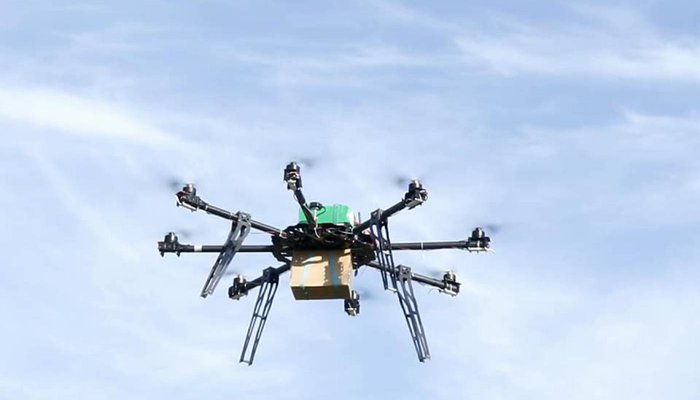
Need and Oppurtunity
One of the main reasons why Nepal is economically a least developed country is because there is not much happening for economic development. Nepal imports over 90% of products for different purposes and exports less than 10% products to earn foreign currencies resulting in the huge trade deficit. Therefore a major economic overhaul is required to make Nepal a developed country in the 21st century. For that to happen, Nepal must give the highest priority to science, technology creation, and innovation in order to ensure a sustainable base for her much-needed growth engines. Considerable attention is needed to nurture homegrown inventors, innovators and scientists for the economic development to happen. However, because of the lack of such an initiative at the government level, many talented, innovative and creative Nepalis are leaving the country every year in search of better careers and opportunities abroad. This is a huge and shameful loss for a poor country like Nepal. As a result, Nepal is always one of the least developed countries despite so many foreign aids coming for many years. Unless and until Nepal stops losing gifted and talented human resources at such an alarming rate, it will always remain an underdeveloped country. This is the bitter but irrefutable fact. Our wish is to keep those talented and creative people and use their talents for the economic development of Nepal.
National Innovation Center (NIC) has been formally established in 2012 to find ways to keep innovative, talented and creative Nepalis in the country. In other words, NIC aims to retain, nurture and promote Nepal’s top human capital and leverage their considerable intellect, creativity, and talent in fostering the country’s social and economic growth. NIC will also provide donor communities and friends of Nepal with a unique and powerful opportunity to help Nepal become a prosperous nation.
The vision of the National Innovation Center is to introduce Research and Development (R&D) culture in Nepal and help to nurture and promote innovation based ecosystems by employing both grassroots (bottom up) and top-down approaches as given below.
- Grassroots Approach: NIC intends to set up the network of local grassroots innovation hubs in rural Nepali communities with the idea to provide tools and resources in order to support innovative rural Nepali populace and to incubate their creative ideas. This is about recognizing and helping the often-overlooked resourcefulness and inventiveness of grassroots innovators as well as supporting them to creatively solve their local challenges, all the while contributing to the local economy.
- Top-down Approach: NIC will also have a central structure and regional structures to work with talented and innovative Nepalis, who are either studying at the university or graduated from the university. This central hub is intended to act as an ‘impact accelerator/incubator’ at the national level to support innovative enterprises and research projects that can positively impact the social and economic fabric of the country. This hub is intended to foster an anti-disciplinary spirit, “going beyond boundaries and disciplines and encouraging an unconventional mixing and matching of disparate areas to create projects and products that can create tangible impact in the country.”
- Moreover, the vision includes creating an environment conducive to persuading talented Nepalese researchers and scientists currently working abroad to engage and contribute in various ways to help nurture the creativity of young and talented Nepalese back home. NIC will create a database of those researchers and scientists and will request them to provide mentorship to young Nepali researchers and innovators in various fields as it will be needed.
A not-for-profit sharing company by the name of “Rashtriya Awishkar Kendra” (National Innovation Center) has been registered according to Nepal Company Act 2006. The innovation center will provide young researchers, innovators and inventors full financial support and mentor in four steps as given below:
- Step 1 – Provide full financial support and mentoring for accelerating prototype design,
- Step 2 – Provide full financial support and mentoring for product development,
- Step 3 – Provide full support for getting patent right, trademark, intellectual property right, etc.
- Step 4 – Provide support for connecting them to investors so that they can launch innovative products and services aimed at impacting the economic and social development.
Sustainability
NIC will be a unique organization because the goal is to make it fully sustainable. In order to make the center unique and fully sustainable from the very beginning, NIC will register a hydropower company as a major stakeholder and will develop a 10 MW to 15 MW hydropower station. The power will be sold to the government to generate cash income for sustaining the center.
The hydropower station was chosen to make the innovation center sustainable because it is the most predictable, stable, and steady source of revenue than other sources. It is one-time investment and takes about five years to complete the construction and generate power. Four potential sites for the construction of the run-off-the-river hydropower stations have been selected by our hydropower expert team for detail study. NIC will get necessary permission from the government of Nepal to build the power station and sell the power.
It is estimated that a 10 MW hydropower station will generate a net income of about US$ 3 million to US$ 4 million every year by selling the power to the government. At the beginning years of power production, 75% (~$3 million) of the net income will be used every year to pay back interest and loan, and pay for the operating and maintenance cost. 25% (~US$ 1 million) of the net income will be used to run the innovation center. The estimated loan payback period is 8 years. Once the bank loan is paid off, NIC will have at least US$3 Million for operation. After NIC will start operating from the income of the hydropower, we will also be looking for all possible sources of income in future as well.
Help us turn innovative ideas into marketable products .
Support and be a Part of this innovation
Articles/news.
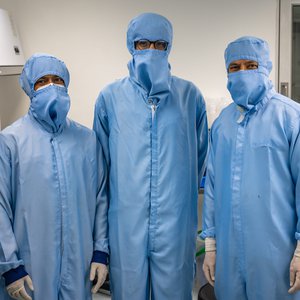
Our Fight Against Covid-19
The government of Nepal announced nationwide lock down on March 24, 2020 to minimize the spread of Coronavirus across the country. Soon after the ann…
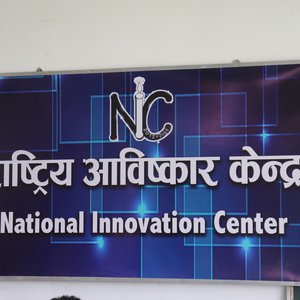
Mahabir Pun's dream of National Innovation Center, Nepal
Amid a function held on the TU premises, Flemming Topsøe, a Danish professor inagurated the center on the TU premises, Kirtipur.
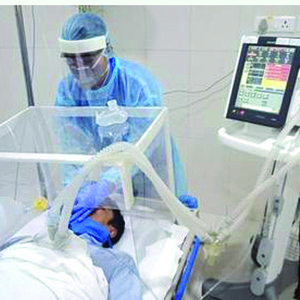
National Innovation Centre Develops Aerosol Box
As the number of cases continues to rise in Nepal, medical professionals here are also facing an increasing risk of contracting the virus. So, a team…

Getting Necessary Tools to the Right People
According to the government statistics till date, the number of corona infected in the Kathmandu valley of Nepal is 16 thousand 39 people. In other 7…
Support and be a Part of this great innovation
Let's conjoin to fuel the future of innovation at nic.
If you have an innovative idea, we can help bring it to life. We aim to partner with the best innovative minds in Nepal to address emerging challenges and opportunities. Submit your ideas to NIC to see how we can collaborate.
Have an innnovative idea that matches NICs needs and interests! Simply complete the form below and click on Submit. If your idea has the potential of becoming the next big thing in innovation, we will get back to you.
Fill this Form
Project Inquiry
Got Questions?
Have any queries regarding Project ? Fill your details below along with your questions and we will get back to you.

Mahabir Pun
- Quick Facts
- Photo Gallery
- Official Sites
Who is Mahabir Pun?
Mahabir Pun is a Nepali scientist, teacher, social entrepreneur, and activist known for his extensive work in applying wireless technologies to develop remote areas of the Himalayas. Pun founded the Nepal Wireless Networking Project in 2002 to build a local communication network using wireless technology to connect in the Himalayan communities. His full name is Mahabir Pun Magar. He founded the Nepali wireless Networking project in 2002. Mahabir Pun led the initiative to register a nonprofit organization named "Rashtriya Abiskar Kendra" in 2012, widely termed as National Innovation center in English. Mahabir has got social attraction with his donation of land for the National Innovation Center. Social worker, Mahabir Pun has a lifelong vision for improving rural Nepal.
- 1st vision is to "set up Vocational training schools for rural people so that the young can get better jobs in the national and international job market."
- 2nd vision is to "help people start income-generating programs in rural areas that are viable there to can't afford to go to college or Univesity."
- 3rd vision is to " establish a college by 2015 and a university later on for the children of poor people, who create the local economy and to create jobs locally."
- 4th vision is to " bring information and communication technology to the remote villages of my country and use it for education, medical, commercial, and communication purposes."
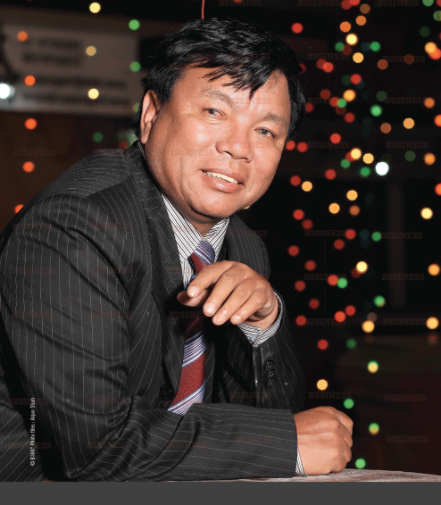
Source: @b360nepal
Early Life and Family Background
Mahabir Pun Phagami was born on 22 January 1955 in Myagdi District, Nepal. Mahabir Pun is 66 years old as of 2021. He holds Nepali Nationality. His Zodiac sign is Aquarius. He raised in Nangi, a remote village in the mountainous district Myagdi District of Western Nepal. Mahabir Pun has completed his school Education from Nangi. His father's name is Kisne Pun and he retired as a rifleman in 1965 and died in 1988 and his mother's name is Purbi Pun. He spent his childhood grazing cattle and sheep and attending a village school without paper, pencils, textbooks to qualified teachers. After finishing high school, he worked as a teacher in four schools. He succeeded in gaining a partial scholarship to the University of Nebraska at Kearney in 1989. Mahabir Pun graduated with a bachelor's degree in Science Education in 1992. After earning his master's degree in education at the University of Nebraska at Kearney in 2001, he returned to his village of Nangi, 24 years after having left there as a child. He belongs to Asian ethnicity. His race is Asian.
Is Mahabir Pun married?
Social entrepreneur Mahabir Pun Phagami is married. His wife's name is Ommaya Pun, he married Ommaya Pun, in June 1998. His wife did not go to live with him in his parent's home in Chitwan. Ommaya Pun completed her ninth-grade studies in Nangi. He has a daughter name is June pun. June pun was born September 20, 1998, in Pokhara. Mahabir Pun focused on his career. His sexual orientation is straight.

Source: @wirelessprophet
Awards and Achievements
- ICT pioneer Award (2019)
- Jonathan B. Postel Service Award (2014)
- Ramon Magsaysay Award or Nobel Prize of Asia (2007)
- The University of Nebraska Award (2007)
- Overall Social Innovation Award (2004)
- Elected Ashoka Fellow (2002)
Mahabir Pun Net Worth
Mahabir Pun has an estimated net worth of around $ 1-5 Million as of 2020. Her major sources of wealth come from a Teacher, scientist, social entrepreneur, and others. He is living a luxurious lifestyle and lives in Pokhara.
How tall is Mahabir Pun?
Scientist Mahabir Pun stands tall at a height of 5 feet 11 inches. Pun's body build is slim. His other body measurements such as weight, hair, and eyes are unknown.
Did you find any mistake? Help us to update this page.
Birthday By Profession
Birthday by place.
- Mumbai, India
- Capetown, South Africa
- Kathmandu, Nepal
- Atlanta, Georgia
Birthday By Month
- Born On 22 Jan
- Born On January
- Born In 1955 AD
- Born In Myagdi District, Nepal
- Aquarius Celebrities
- 69 Years Old
Upcoming Birthday's

Vivian Olyphant

Mickey Gall

Aasif Sheikh

Kushal Bhurtel

IMAGES
VIDEO
COMMENTS
Mahabir Pun (Nepali: महावीर पुन, pronounced [maːbir pun]) is a Nepali researcher, teacher, social entrepreneur and an activist known for his work in applying wireless technologies to develop remote areas of the Himalayas, also known as the Nepal Wireless Networking Project. He is a widely known figure in Nepal, and his work has been recognised by the Ashoka Foundation, the ...
He is a true "Mahan "or great human being as his name is "Mahabir". Despite facing several difficulties, he introduced Wireless Internet technology in the rural areas of Nepal. Therefore, he is known as the first man in technology development as a researcher and initiator in Nepal. Name. Mahabir Pun. Date of Birth. 22th January, 1955 ...
Early Life. Born and raised in a small village called Nangi, a mountainous Myagdi district of western Nepal, Mahabir Pun is a well-known scientist, social entrepreneur and activist of Nepal. Mahabir Pun was born on January 22, 1955. Father Krishna Pun and mother Purbi Pun were not able to provide Mahabir Pun a life he wanted.
USA . 11710 Plaza America Drive Suite 400 Reston, VA 20190 +1-703-439-2120
Mahabir Pun was born on 22 January, 1994 and raised in Nangi a remote village in the mountainous district Myagdi District of western Nepal. He spent his childhood grazing cattle and sheep and attending a village college besides paper, pencils, textbooks, or certified teachers. But Pun's existence was modified dramatically when his father, a ...
Mahabir Pun is a Nepalese teacher, social entrepreneur and an activist known for his extensive work in applying wireless technologies to develop remote areas of the Himalayas, also known as the Nepal Wireless Networking Project. He is a widely known figure in Nepal, and his work has been recognized by the Ashoka Foundation, the Ramon Magsaysay Foundation, University of Nebraska, and Global ...
Mahabir Pun is a Nepali researcher, teacher, social entrepreneur and an activist known for his work in applying wireless technologies to develop remote areas of the Himalayas, also known as the Nepal Wireless Networking Project. He is a widely known figure in Nepal, and his work has been recognised by the Ashoka Foundation, the Ramon Magsaysay Foundation, [University of Nebraska Kearney],and ...
A true inspiration for all. Born on 22 January 1955 in Nangi, a remote village in a mountainous district, i.e., Myagdi District of western Nepal and having raised there, Pun spent his entire childhood grazing cattle and sheep and attending a village school with no stationery or qualified teachers. But his life took a good turn when his father ...
In electing MAHABIR PUN to receive the 2007 Ramon Magsaysay Award for Community Leadership, the board of trustees recognizes his innovative application of wireless computer technology in Nepal, bringing progress to remote mountain areas by connecting his village to the global village. ... pens and papers to write on. As I grew older, I wished ...
In Nepal's mountainous regions, Mahabir Pun is building self-sustainable, community-run schools that improve the quality of education, bring jobs and opportunities to villages, and curb migration…. Read more. This description of Mahabir Pun's work was prepared when Mahabir Pun was elected to the Ashoka Fellowship in 2002.
He is happy at the response and says that it is helpful both for diagnostic purposes as well as for continuous-education purposes of health workers in far flung villages. "Every morning from 8:15 to 9:15, doctors gather at the Model Hospital to network with the linked villages.". Mahabir Pun is also involved with the Open Learning Exchange ...
Pun founded the Nepal Wireless Networking Project in 2002 to connect people in the Himalayan communities. The idea of building a wireless network back in 2000 was difficult as Wi-Fi was an emerging technology. Additional to that, people there hadn't been exposed much to any kind of technologies. Despite the challenges, Pun was able to connect ...
Dr. Mahabir Pun is a Nepali scientist, teacher, social entrepreneur and an activist known for his extensive work in applying wireless technologies to develop remote areas of the Himalayas.
presented by Mahabir Punin Internet Hall of Fame 2014on 04/08/2014. Internet Hall of Fame 2014: Mahabir Pun. Watch on. Mahabir Pun: I started building a wireless network in my country Nepal in early 2000, when the wireless technology was just coming. Nobody then believed that it was possible to build a wireless net ...
Mahabir Pun, a scientist, educator, social entrepreneur, and activist from Nepal, is renowned for his impactful work in utilizing wireless technologies to uplift off-the-grid regions in the Himalayas. He is recognized as a trailblazer in the fields of technology and research and is credited with bringing wireless Internet technology to rural ...
Mahabir Pun is a Nepalese teacher, social entrepreneur and an activist known for his extensive work in applying wireless technologies to develop remote areas of the Himalayas, also known as the Nepal Wireless Networking Project. He is a widely known figure in Nepal, and his work has been recognized by the Ashoka Foundation, the Ramon Magsaysay ...
Mahabir Pun. After getting his Master's Degree in education from University of Nebraska, Mahabir Pun returned to his native village Nangi in Nepal, with a courageous and ambitious goal to set up a school that will serve as a model for local educational as well as economic development. Here is his story in his own words.
Mahabir Pun has spent the past 26 years, since graduating from the University of Nebraska, on building community projects around the idea that innovation is the way to a brighter future for his country. As Mahabir has no paying job to speak of, in fact, has never had since his return to his country, every project must have support and ...
Mahabir Pun Makes Education His Mission Mahabir Pun shares his personal story in a short documentary created by Ericsson's Networked Society campaign. In the piece, Pun talks about the importance of having a "strong education," and how , for him, it was unattainable because he lived in a rural Nepal village.
Pun with his Magsaysay Award. Photo: Wireless Prophet. Mahabir Pun has received a number of international awards so far, the major ones being Ashoka Fellow by the Ashoka Foundation in 2002; Overall Social Innovations Award from the Global Ideas Bank in 2004; also known as the Noble Prize of Asia, the Magsaysay Award in 2007; honorary degree as Doctor of Humane Letters from the University of ...
A short Biography of Mahabir pun by Prem Prasad Sir of Brilliant Multiple Campus in a function.
Step 1 - Provide full financial support and mentoring for accelerating prototype design, Step 2 - Provide full financial support and mentoring for product development, Step 3 - Provide full support for getting patent right, trademark, intellectual property right, etc. Step 4 - Provide support for connecting them to investors so that ...
Mahabir Pun is 66 years old as of 2021. He holds Nepali Nationality. His Zodiac sign is Aquarius. He raised in Nangi, a remote village in the mountainous district Myagdi District of Western Nepal. Mahabir Pun has completed his school Education from Nangi. His father's name is Kisne Pun and he retired as a rifleman in 1965 and died in 1988 and ...